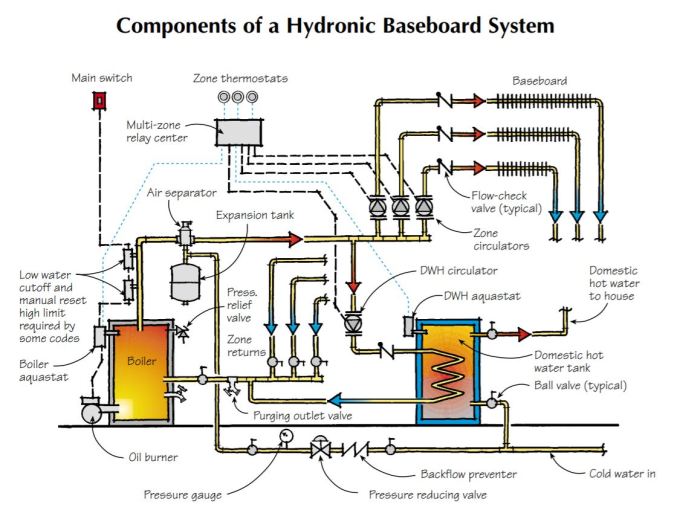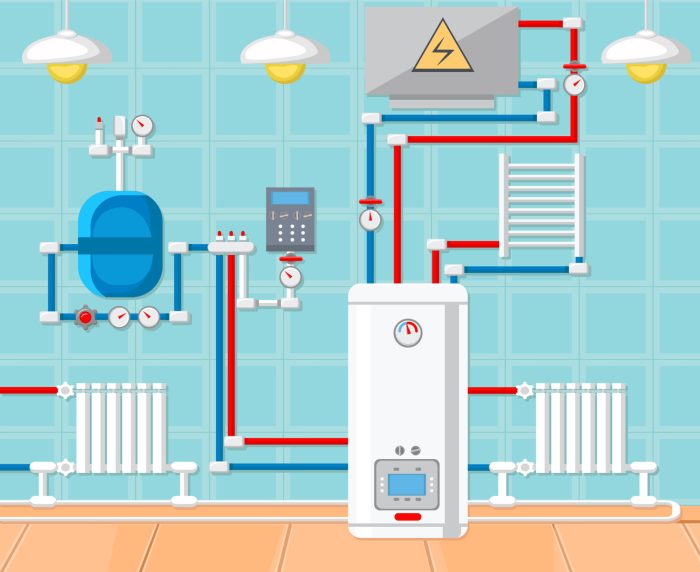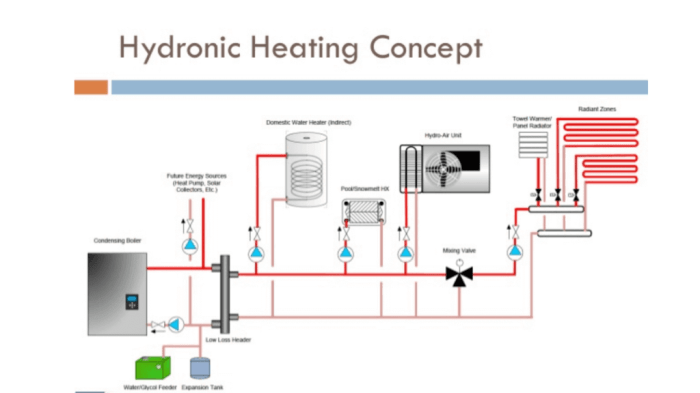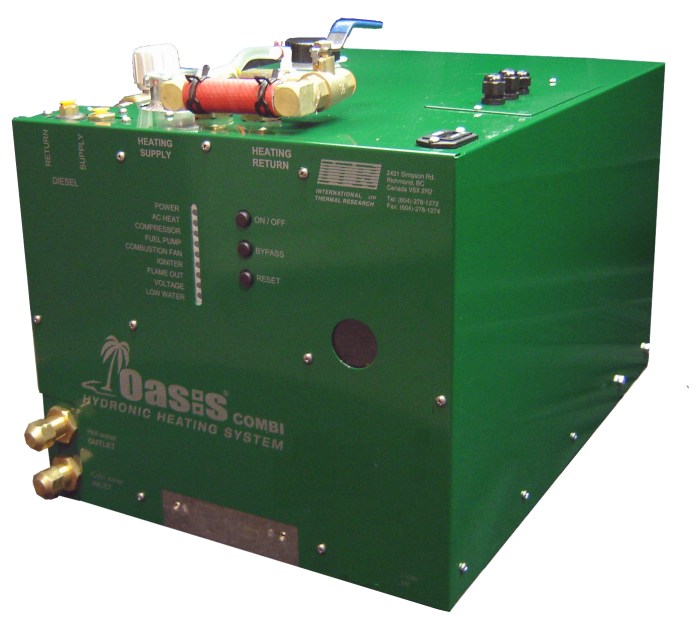Parts of a hydronic heating system – Delve into the intricacies of a hydronic heating system, an efficient and versatile solution for your home’s warmth. From the heart of the system—the boiler—to the heat-distributing radiators and baseboards, each component plays a crucial role in delivering comfortable and reliable heat.
The journey begins with the boiler, where fuel is transformed into heat, which is then carried throughout the system by a network of pipes and pumps. Radiators and baseboards, strategically placed throughout your home, release this heat into the living space, creating a cozy and inviting atmosphere.
Boiler

A boiler is the heart of a hydronic heating system, responsible for generating the heat that circulates through the system.
Types of Boilers
- Gas-fired boilers: These are the most common type of boiler, using natural gas or propane as fuel.
- Oil-fired boilers: These boilers use oil as fuel and are typically more expensive to operate than gas-fired boilers.
- Electric boilers: These boilers use electricity as their energy source and are typically more efficient than gas or oil-fired boilers.
Working Principle of a Boiler
A boiler operates by transferring heat from a fuel source to water. The fuel is burned in a combustion chamber, and the heat generated is transferred to the water through a heat exchanger.
Heat Exchanger in a Boiler
The heat exchanger is a critical component of a boiler. It allows heat to be transferred from the combustion chamber to the water without mixing the two fluids. Heat exchangers are typically made of copper or steel.
Pipes and Piping Materials: Parts Of A Hydronic Heating System

Pipes are used to distribute the heated water from the boiler to the radiators or baseboards. The choice of pipe material is important as it affects the efficiency and longevity of the system.
Types of Pipes, Parts of a hydronic heating system
- Copper pipes: Copper pipes are durable, corrosion-resistant, and have a high thermal conductivity, making them a good choice for hydronic heating systems.
- PEX pipes: PEX (cross-linked polyethylene) pipes are flexible, easy to install, and resistant to corrosion. They are becoming increasingly popular for hydronic heating systems.
- CPVC pipes: CPVC (chlorinated polyvinyl chloride) pipes are also resistant to corrosion and are less expensive than copper pipes. However, they have a lower thermal conductivity than copper.
Importance of Proper Pipe Sizing
Proper pipe sizing is essential for ensuring efficient water flow and heat distribution. Pipes that are too small will restrict the flow of water and reduce the system’s efficiency. Pipes that are too large will waste energy and increase the cost of operation.
Radiators and Baseboards

Radiators and baseboards are the components that transfer heat from the water to the room. They are typically made of metal and have a large surface area to maximize heat transfer.
Types of Radiators and Baseboards
- Convection radiators: These radiators use natural convection to circulate warm air around the room.
- Radiant radiators: These radiators emit heat primarily through radiation, which is more efficient than convection.
- Baseboards: Baseboards are similar to radiators but are typically installed along the base of walls.
Heat Transfer Mechanisms
Radiators and baseboards transfer heat through two primary mechanisms: convection and radiation. Convection involves the transfer of heat through the movement of air or water. Radiation involves the transfer of heat through electromagnetic waves.
Factors Affecting Efficiency
The efficiency of radiators and baseboards is affected by several factors, including their surface area, material, and design.
Question & Answer Hub
What are the advantages of a hydronic heating system?
Hydronic heating systems offer several advantages, including even heat distribution, energy efficiency, and quiet operation.
How do I maintain a hydronic heating system?
Regular maintenance is crucial for optimal performance. This includes flushing the system, checking for leaks, and ensuring proper water levels.
